At YES Medspa & Cosmetic Surgery Centre, one of the most common skin conditions we treat is unwanted pigmentation or discolouration. Many of our Vancouver-area clients contact our office looking for skin care products or laser treatments to lighten and clear existing pigmentation. We wrote this blog post for melasma month to outline the main identifying features of the different types of hyperpigmentation—melasma vs. sun damage—to help you find the best solutions for your skin.
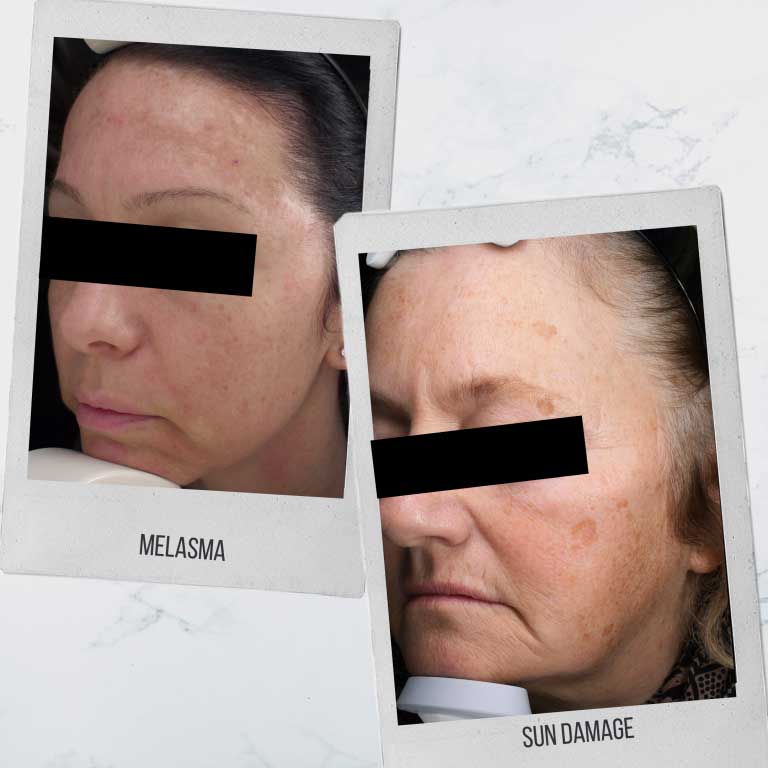
Hyperpigmentation is an overarching term that refers to skin discolouration or darkening. This can be caused by a number of different factors: sun damage, acne scars, or a post-inflammatory response. In some cases, even hormones can cause your skin to darken. One of the most talked about types of hyperpigmentation is melasma.
Melasma is a skin condition that plagues both men and women. However, it is more prevalent in women, oily skin types and people with darker skin tones. It occurs when the cells that produce pigment in the skin become aggravated or over-active and start producing more pigment than normal.
Melasma can also be referred to “pregnancy mask” because many women first notice this hyperpigmentation when they are pregnant. Hormones can play a large role in the development and darkening of melasma and when pregnant, your hormone levels are heightened and fluctuating which can stimulate the development of melasma.
Is It Melasma or Sun Damage?
Melasma
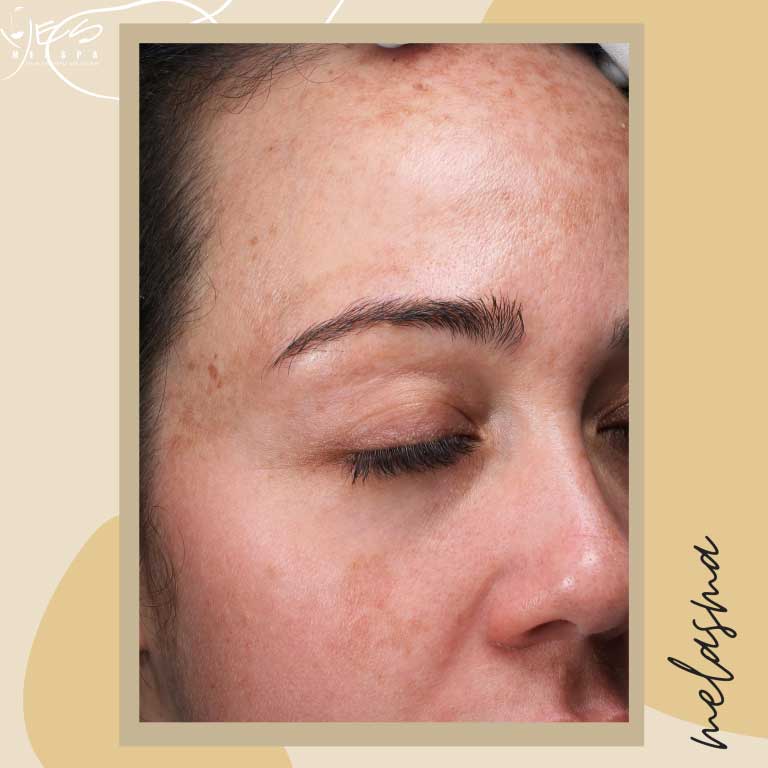
Melasma presents differently than other forms of hyperpigmentation. We can usually determine if you have melasma with a visual inspection of the skin. However, at YES Medspa, we take it one step further and use our VISIA camera system, which uses a UV camera, to show the deeper levels of damage in the skin. This advanced assessment allows our team of medical aestheticians to develop a treatment plan that treats not only the surface concerns but also the underlying conditions of your skin.
Visually, melasma presents as blotchy/irregular spots on the skin. We will often refer to melasma as ‘islands of pigmentation’ because the pigmented cells often occur in larger patches rather than isolated spots. Melasma is also commonly symmetrical on both sides of the face. Although it can appear on any area of the body, it most commonly occurs on the cheeks, upper lip and lateral edges of the face. It will typically darken with sun exposure, heat, inflammation and hormonal fluctuation. HEV (High-Energy Visible) light, also known as blue light which is emitted from your electronic devices, can also cause micro-inflammation in the skin, resulting in skin damage and melasma stimulation. This is one reason why we always recommend a full spectrum SPF and that you apply it every day. Even if you are in an office all day.
Sun Damage
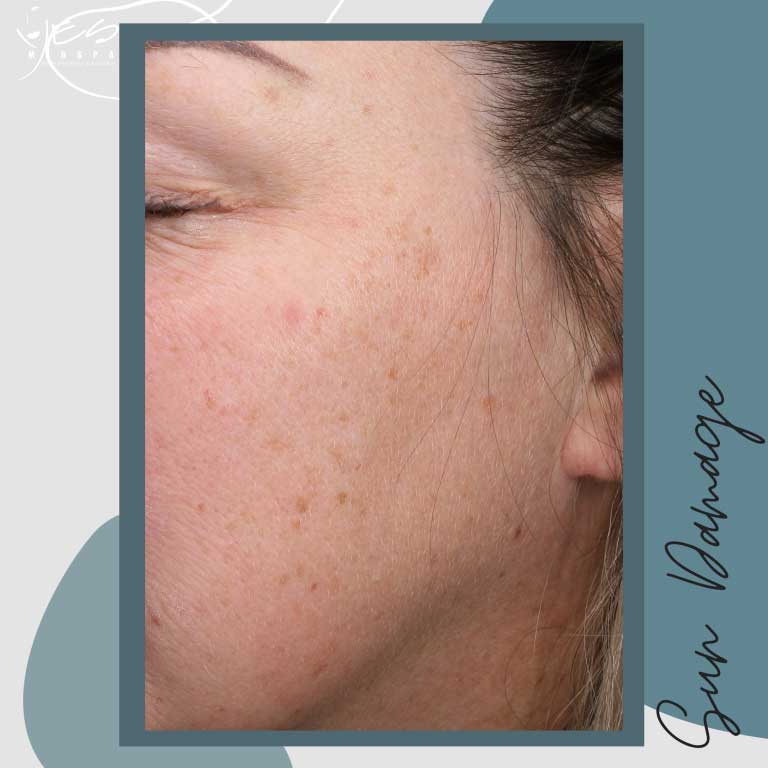
Sun damage occurs when the UV rays emitted from the sun stimulate the production of melanin (pigment) within the skin’s cells called melanocytes. When stimulated, these cells over-produce pigment which results in areas of hyperpigmentation and appear as darker spots in areas exposed to the sun. These spots are usually not visible to the naked eye when first created. However, over time, as the skin naturally exfoliates, these darkened spots become more visible.
A common misconception about sun spots is that they are caused by recent sun exposure or naturally occur with age. In reality, these spots have been in your skin working their way up for many years. Anyone can get sun spots, but they are most common in men and women with lighter skin tones, as they have less abundant melanin naturally occurring in their skin.
That being said, all skin types, even darker skin tones, can experience sun damage. Even if you don’t actively tan or experience sunburn, you can still overstimulate the cells and damage your skin. This is why it’s so important to wear broad-spectrum sun protection of at least SPF 30 regardless of your age or skin color.
Best Treatments for Melasma
Due of the nature of melasma, it requires very different treatment techniques. Because it effects the deeper, dermal layer of the skin and is caused mostly by internal factors such as genetics and hormones, it is more difficult to treat and can never truly be cleared.
Topical products, such as prescription strength retinols and hydroquinone creams are a staple in melasma treatment plans to help prevent further pigment concerns and lighten existing pigment. Additionally, many effective medical-grade ingredients have been introduced to specifically target and reduce the reactivity of your pigment producing melanocytes. Consistent use of these products within the recommended guidelines has enabled our clients to effectively reduce the amount of pigment produced when exposed to the main melasma-causing factors. Additionally, the products gently exfoliate existing pigment, causing gradual fading.
We offer several in-office treatments that can be used to treat melasma as well. However, all clients are provided with an at-home skin care routine before any in-office treatments can begin. Melasma is very unpredictable and because it can be stimulated by inflammation, all clients must be on a pigmentation suppressing skin care routine for roughly 6 weeks before in-office treatments can be booked. Due to the strength of the in-office peels and lasers offered at YES Medspa, our team of highly-trained, medical aestheticians want to ensure that the potential inflammation from the office treatments will not trigger or worsen your melasma.
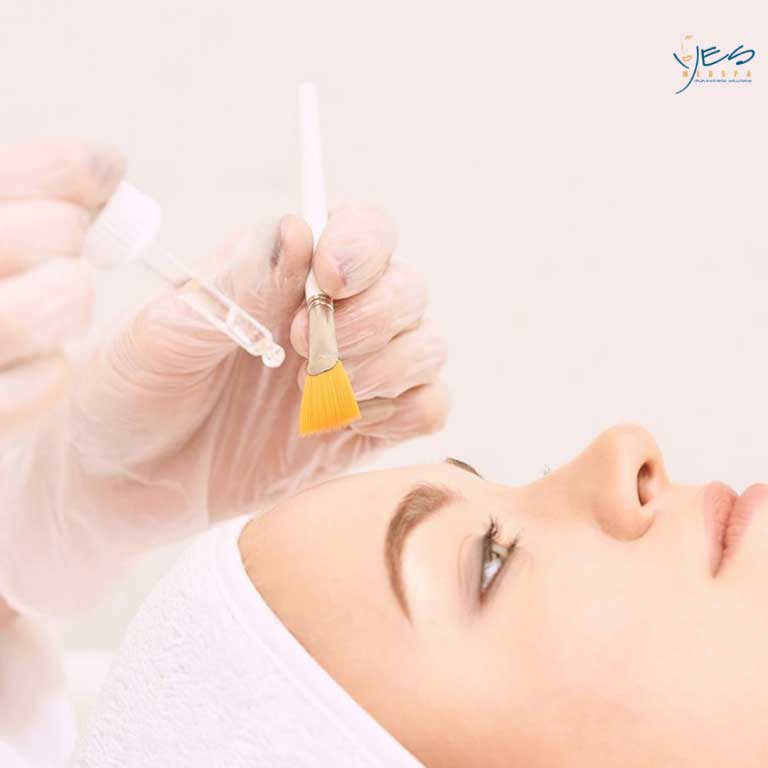
A series of chemical peels provide our clients a non-light based treatment option to help accelerate the sloughing and exfoliation of your pigmentation. Many chemical peels will also have brightening ingredients such as Kojic acid to help lighten existing pigment. These treatments should be performed once per month for 3-6 months for best results. Chemical peels will cause mild-moderate peeling of the skin for 5-10 days post treatment and will leave you sensitized to the sun. We recommend that these treatments be performed in the fall or winter months for best results.

Fractional lasers, such as the Icon 1540 Non-Ablative Laser, are another effective and safe way to break up the “islands of pigment” caused by melasma without over stimulating your melanocytes. Fractional lasers are designed to treat “fractions” of the skin. How? Controlled channels of energy are emitted and create micro-channels of damage within the many layers of the skin resulting in a “turnover” or resurfacing of the skin. The top layers of skin, which hold the visible unwanted pigment, is then naturally exfoliated as the skin resurfaces. 3-5 treatments are typically recommended and are performed every 4 weeks. For melasma, ongoing maintenance is required with either at home skin care or one-off treatments every 3-4 months.
Laser/light based treatments are not suited for all melasma cases. As heat and light can stimulate your melanocytes, lasers are used only once we are certain the melanocytes are suppressed enough to respond predictably. Certain light treatments such as IPL (Intense Pulsed Light) treatments can further aggravate your melanocytes, and result in darker pigmentation. Therefore it is important to find a clinic that understands the underlying causes of melasma and builds a treatment plan accordingly.
Best Treatments for Sun Damage
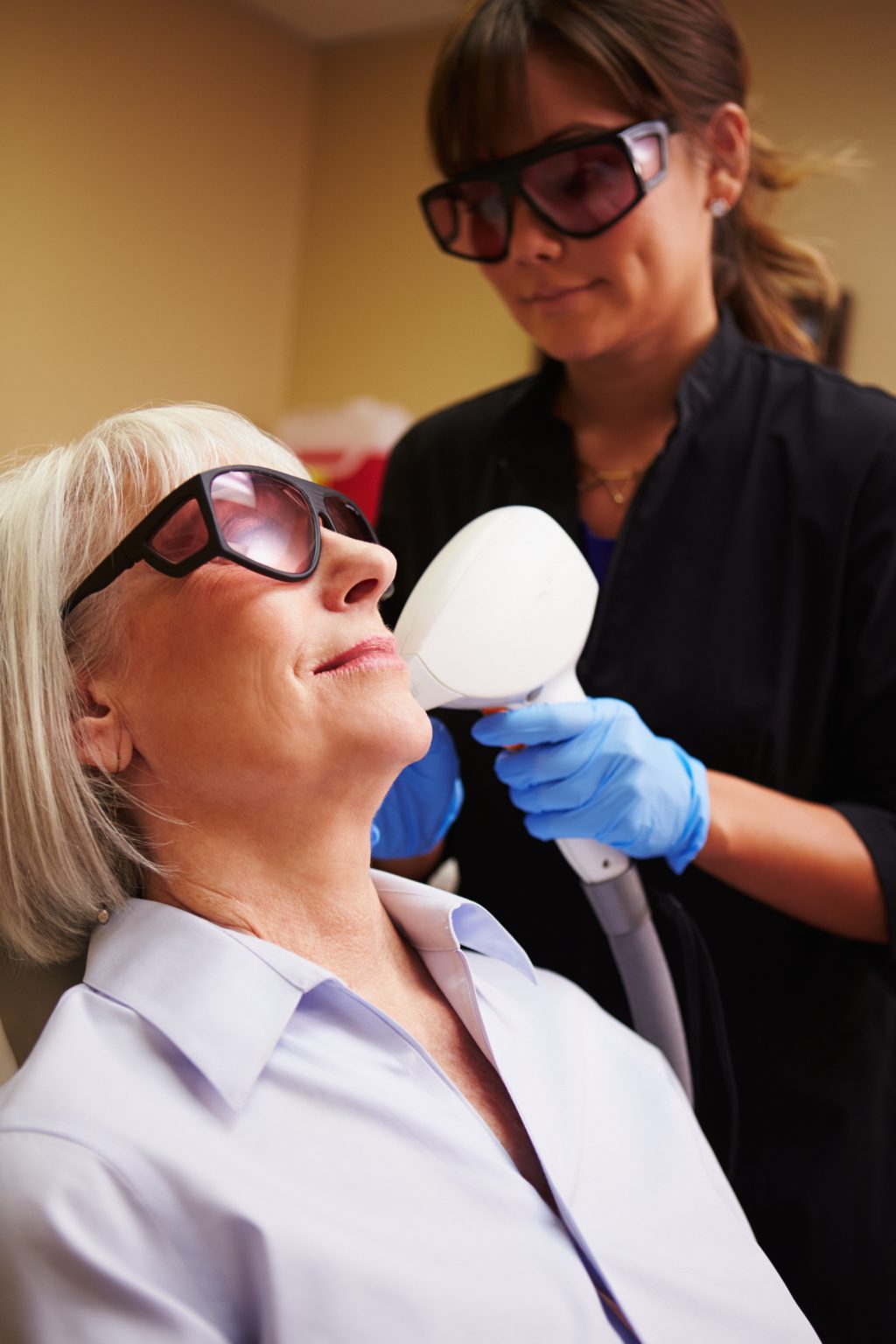
Unlike melasma, sun damage is much easier to treat and clear from the skin. Sun damage can be treated with topical lightening products, such as vitamin-C, medical-grade retinols and chemical exfoliants (i.e. Lactic or Glycolic acid). A series of chemical peels can also be used to lighten and exfoliate off sun damage.
For more moderate pigmentation a series of light based treatments, such as IPL (Intense Pulsed light, a.k.a Photofacials) may be recommended to lift more stubborn sun damage. IPL treatments use a specific wavelength of light energy to target and damage the hyperpigmented skin cells. You will notice your sun spots get darker immediately after the treatment. Once treated, your sun spots are purged from the skin and will flake off over the following 3 to 5 days.
When melasma isn’t a concern, we can safely treat sun spots with topical products and light based treatments, such as photofacials, without worsening the condition. However, when melasma or diffuse pigmentation is present, a slow and steady approach is taken to ensure that we re-stabilize your skin’s pigmentation (melanocytes) and break up existing spots without stimulating further darkening. At YES Medspa, we’re ready to guide you to healthy skin and look forward to answering your questions.
To schedule your advanced skin analysis, call our office today at (604) 888-9378 or request a consultation.

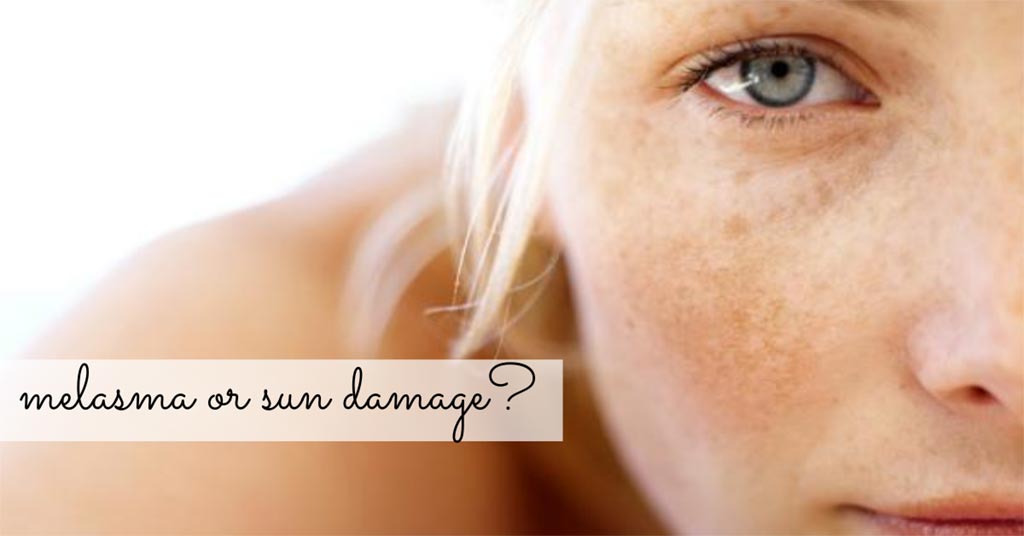








I have what might be sun damage on my face but no one seems to know. Raised skin about an inch long, no discoloration or roughness. Can you help?
Hi Jodie,
We would be happy to set up a consultation to assess in person. I will have a member of our Medspa team to email you. You can of course call our clinic at 604-888-9397 to start the process.